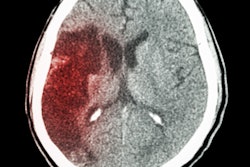Dear Artificial Intelligence Insider,
Stroke patients can receive intravenous thrombolysis up to within 4.5 hours of the onset of symptoms, but about 25% of these patients miss out on that treatment because they don't know when their symptoms began. Fortunately, artificial intelligence (AI) technology may be able to help.
A team of researchers from South Korea has determined that machine-learning algorithms can yield higher sensitivity and comparable specificity to human readers for determining if stroke onset had occurred within the recommended treatment time window. This could potentially allow some patients to receive thrombolysis who otherwise wouldn't be eligible due to an uncertain onset of stroke symptoms, according to this edition's Insider Exclusive.
In other AI stroke-related research, a Canadian group reported that an AI algorithm may be able to assist clinicians in making better treatment decisions for acute ischemic stroke patients by finding and quantitating infarcted brain tissue on baseline CT studies.
A deep-learning algorithm can differentiate between Alzheimer's disease and idiopathic normal pressure hydrocephalus on MRI scans at a comparable accuracy to radiologists, according to a recent study from Japan. In addition, researchers from the University of Texas Health Science Center and Icahn School of Medicine at Mount Sinai found that a deep-learning model may enable patients with multiple sclerosis to avoid repeat MRI scans and multiple doses of gadolinium-based contrast agents.
Thanks to AI, routine chest or abdomen CT studies can also be used to identify patients at risk for osteoporotic fractures, according to a study from Israel. In addition, a Japanese group concluded that a deep-learning algorithm can predict pulmonary to systemic blood flow on chest x-rays just as well as clinicians, potentially helping to determine which patients with congenital heart disease require intervention.
Meanwhile, another team from Japan shared how machine-learning algorithms can classify the rupture status of cerebral aneurysms. On the regulatory front, the U.S. Food and Drug Administration recently finalized rules that made it easier for computer-aided detection software developers to garner regulatory clearance for their products.
Another study found that an AI algorithm can accurately differentiate between benign and malignant small solid renal masses on multiphase contrast-enhanced CT scans. As a result, patients could be triaged to either biopsy or active surveillance, according to the researchers.
Several recent studies also highlighted the role AI can play in the fight against breast cancer. A multinational team reported in a large-scale study that an algorithm could reduce both false positives and false negatives in breast cancer screening, while a Swedish group described how AI-based analysis of negative screening mammography exams yielded better predictions for a woman's future risk of cancer than risk models based just on breast density measurements.
Do you have an idea for a story you'd like to see covered in the Artificial Intelligence Community? Please feel free to drop me a line.




















